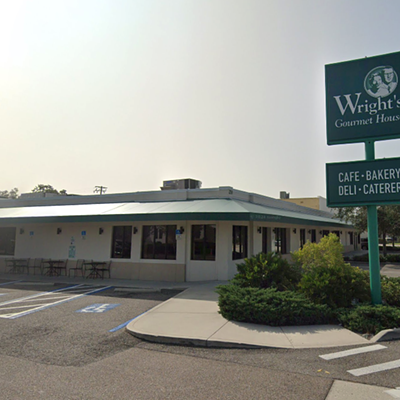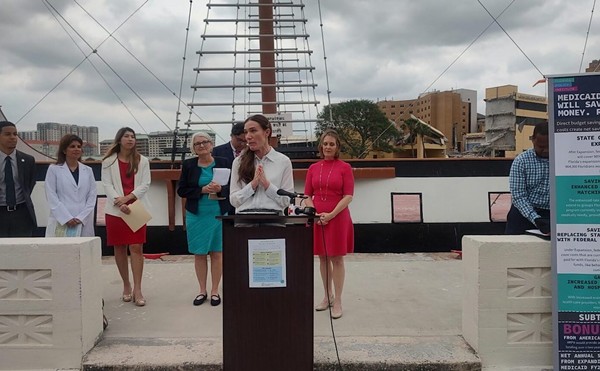Ernesto's Bar and Package Store was the kind of dive where happy hours were downright scary. "You could hear guns hitting the floor," a former Tampa police chief once recalled, characterizing the atmosphere of the Ybor City bar when his officers walked through it.
In 1985, Ernesto's was the site of two homicides.
Police closed the place for good in 1987 as a public nuisance, and the city tried for years thereafter to get building owner Vincent S. LoScalzo to clean up or knock down the abandoned structure at 2608 N. 20th St.
LoScalzo, 64, reputed head of the Trafficante crime family, ignored city pleas as well as tens of thousands of dollars in code fines.
With $187,609 in code liens, a property owner isn't supposed to be able to sell his real estate without paying the delinquent fines. But that's what LoScalzo did last year.
In fact, LoScalzo — or a company to which he signed over his claim to the property — appears to have realized a modest $12,467 gain on the sale.
How does the owner of a former mob bar, which drained law enforcement budgets for years, walk away with money in his pocket from a city-supervised transaction?
How does a code-fine scofflaw go from $187,609 in the hole to $12,467 ahead?
Weary taxpayers growing accustomed to questionable city real estate deals might have guessed that Tampa-Hillsborough Action Plan Inc. was involved.
THAP paid a company called Columtom Inc. $40,000 for the old Ernesto's site in February 2000. THAP is one of the nonprofits behind Mayor Dick Greco's push to revitalize inner-city Tampa.
The organization also figures in a federal grand jury investigation of Greco development czar Steve LaBrake. The tax-supported nonprofit showered costly favors on LaBrake and his pregnant mistress, who doubled as one of his top aides. In turn, the couple funneled tens of thousands of dollars in grant money to THAP.
City policy allows code fines to be waived if a nonprofit is buying a distressed property, according to Assistant City Attorney Jorge Martin. Martin said that was what LaBrake aide Corine E. Linebrink requested on THAP's behalf for the purchase of the former Ernesto's property. City Attorney James D. Palermo approved the waiver last year, Martin said.
THAP Executive Director Chester M. Luney told the Weekly Planet earlier this year that his group had big plans for the property.
Luney spoke vaguely of putting a training center for underprivileged youth on the land. However, Linebrink told Martin in a January 2000 memorandum that the property would be used "to provide housing, green space and the general improvement of the East Tampa area."
In any case, nothing has risen from the now-vacant lot in almost two years of THAP ownership. As of Nov. 9, city records showed no permits had been pulled or development plans filed for the site.
Florida Department of Transportation officials have their eyes on at least part of the lot as they widen nearby Interstate 4.
It doesn't look as if THAP can embark on new real estate ventures while federal agents circle and auditors constrict the nonprofit's lifeblood, public money.
The story of the Ernesto's land deal starts, not with Vince LoScalzo, but with segregated early 20th century Tampa.
The building that came to house Ernesto's originally opened in 1903 as a Catholic school for black children. The Sisters of St. Joseph named the school for St. Benedict, patron saint of African-Americans.
The Sisters of St. Joseph taught there for almost 40 years, with a brief interruption around 1916. The nuns had to suspend classes. They were threatened with arrest after Florida legislators outlawed the instruction of black children by whites in a black school. The law was later overturned.
Raymond J. Schneider, a retired University of South Florida professor, unearthed much of this history while trying to save the building seven years ago.
In 1951, the building was sold to a Spanish lodge, which held social functions on the premises until the 1960s. After that, Tampa's ill-conceived, so-called urban renewal of Ybor City plunged the area into poverty.
The doors of Ernesto's swung open under LoScalzo's management in 1975. The bar was part of a network of mob-owned liquor establishments catering to blacks in Tampa's minority neighborhoods.
In the case of Ernesto's, owners included mob associate Luis Charbonier, who sold the property to LoScalzo in 1980.
Charbonier, who died in May at the age of 74, was best known for helping inspire a scene in the Martin Scorsese-directed motion picture GoodFellas, during which a loan shark debtor is tossed in a zoo cage with lions.
In 1970, Charbonier and his late brother Raul employed New York gangsters to collect a gambling debt from a Temple Terrace tavern owner. The New York enforcers pistol-whipped the man and threatened to drown him in a pond at Busch Gardens, seal his kids in a refrigerator, and force his wife into prostitution.
















